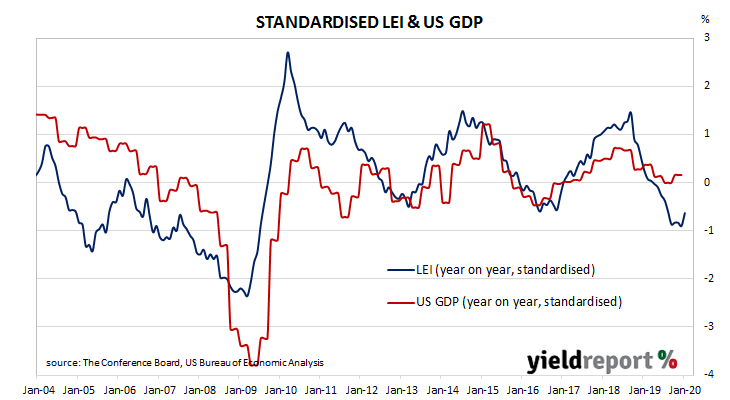The Conference Board Leading Economic Index (LEI) is a composite index which is composed of ten indices which are thought to be sensitive to changes in the US economy. The Conference Board describes it as an index which attempts to signal peaks and troughs as turning points in the index have historically occurred prior to changes in aggregate economic activity. The second half of 2019 contained a string of negative month-on-month figures and the first result of 2020 may represent a break from this earlier trend.
The Leading Economic Index jumped by 0.8% during January, double the 0.4% which had been expected and representing a large turnaround from December’s -0.3%. On an annual basis, the LEI accelerated from December’s growth rate of 0.2% to 1.0% in January.
The Conference Board’s Senior Director of Economic Research, Ataman Ozyildirim, said the US economy will probably continue to grow at an annualised rate of “about 2%” through early 2020. He also noted “the COVID-19 outbreak may impact manufacturing supply chains in the US in the coming months.”
Changes over time can be large but once they are standardised, a clearer relationship with GDP emerges. The latest reading implies a year-on-year growth rate of 1.5% at the beginning of the June 2020 quarter.
US financial markets reacted by pushing Treasury yields higher but only at the short end. By the end of the day, the yield on 2-year Treasury bonds had increased by 2bps to 1.42%, while 10-year and 30-year yields both remained unchanged at 1.56% and 2.01% respectively.

